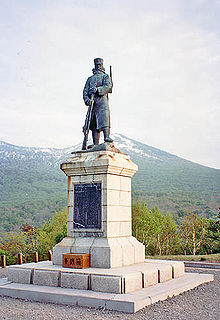Mount Hakkōda disaster

The Hakkōda Mountains incident occurred on January 23, 1902, when a group of Imperial Japanese Army soldiers marched in a blizzard on the Hakkōda Mountains en route to Tashiro Hot Spring located in the Hakkōda Mountains. The 199 deaths during a single ascent make it the world's largest mountaineering disaster in the modern history of mountain climbing.
The Imperial Japanese Army 8th Division's Fifth Infantry Regiment was stationed in Aomori. It was necessary to secure a route through the Hakkōda Mountains in the event that roads and railways were destroyed by shelling of the Aomori coastline by the Russian Navy. Training in movement during snow conditions was also deemed necessary in light of a potential war with Russia, so a crossing of the Hakkōda Mountains was planned.
The 210-man unit that made the march into the Hakkōda Mountains in the snow was selected from the 3,000-man Fifth Infantry Regiment, and set out from Aomori. at 6:55 AM on January 23, 1902. Their objective was Tashiro Hot Spring located 20km (12 miles) away in the Hakkoda Mountains. At 4:00 PM, they reached the summit of Umatateba(732m / 2,402ft). It was only four kilometers (two miles) to the first day's objective, Tashiro Hot Spring, but the weather changed suddenly, and they were struck by a severe blizzard. In the midst of the deep snow and blizzard, they wandered the northeast slope of the Hakkōda Mountains for several days, with 199 of the 210 men freezing to death. On January 27th, the fifth day since their departure, Corporal Fusanosuke Goto. was discovered standing buried in the snow by a rescue party, and the disaster which struck the unit marching through the Hakkōda Mountains was established based on Corporal Goto's testimony.
The soldiers originated from a region with little snow. They were lacking in knowledge of climbing snowy mountains.
On January 25th, 1902, a temperature of -41 degrees (-41.8 Fahrenheit) was observed—the lowest in Japanese weather observation history, and there was an enormous low-pressure system in the skies above the Hakkōda Mountains.
Jirō Nitta wrote Death March on Mount Hakkōda: A Documentary Novel, a semi-fictional account of the disaster. James Westerhoven translated the book into English.[1]
See also
References
- ^ Death March on Mount Hakkōda. Google Books. Retrieved on November 10, 2008.
40°42′24″N 140°52′22″E / 40.70667°N 140.87278°E
